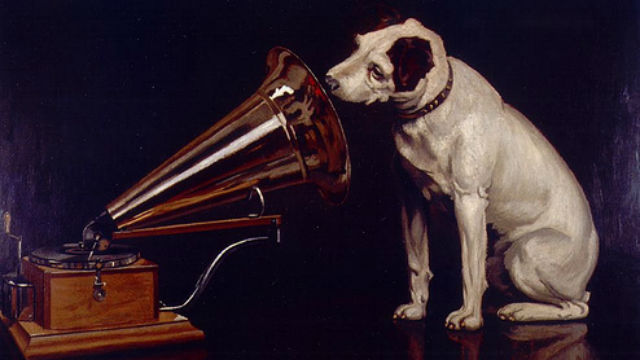Was Darcy a One Percenter? Literary Money Questions, Answered

Am I the only one fascinated by the issue of currency conversion in literature? When a posh fictional nobleman is rumored to have an income of such-and-such, or when a plucky nineteenth-century hero pockets his first dollar, I get the itch to know how much that is by modern standards. The problem used to bug me as kid; nowadays, thanks to Alan Eliasen’s Historical Currency Conversions tool, I’m rolling in knowledge like a pirate in doubloons.
Here are just a few of the site’s revelations. (All modern dollar figures are based on currency values for today’s date, rounded to the nearest American dollar.)
1. How Rich Is Mr. Darcy?
Rich. Our lucky friend Fitzwilliam draws the most famous income in literature: £10,000 per year. In 1813, the year Pride and Prejudice was published, this would have equaled $727,470. With that kind of cash, you could commission an incredibly kitschy statue of yourself rising out of a lake.
But if it doesn’t seem like enough to tempt you, remember that wealth is relative and Austen belonged to a rigidly stratified society. As James Heldman pointed out in a 1990 paper:
Mr. Darcy’s income is at least 300 times the per capita income in his day.Moreover, Mr. Darcy belongs to a very select group.G.E. Mingay, an economic historian, estimates that in 1790, about twenty years before the time of Pride and Prejudice, there were only 400 families among the landed gentry in England whose incomes fell within that range…
The population of England in 1790 was about 8 million. If we assume (generously) 100 living members per extended family, that would place anyone in those 400 families among the wealthiest 0.5% of the nation at the time.
Darcy’s somewhat less loaded friend, Bingley, draws an income of £4,000, which comes to $290,988 per year. Still a very eligible gentleman, if you please.
2. How Poor Is Bob Cratchit?
Poor. In fact, starving. He supports himself, his wife, and at least six children (one of them very sick) on a salary of fifteen shillings a week—which in 1843 equaled just over $82. For that meager scratch he’s working all day, every day, straight through Christmas Eve.
You knew Scrooge was a coldhearted bastard, but you didn’t know he was a flat-out abusive monster. Of course, that was life before labor laws (it’s still life in many countries today), but the whole point of A Christmas Carol is that Scrooge was insanely stingy even by his society’s standards. When he has his epiphany and gives his traumatized wage slave a raise, Cratchit’s first reaction is telling:
Bob trembled, and got a little nearer to the ruler. He had a momentary idea of knocking Scrooge down with it, holding him, and calling to the people in the court for help and a strait-waistcoat.
I get the sense he’d fantasized about using that ruler before.
3. How Much Did Thoreau’s Cabin Cost?
Thoreau was quite proud of his bookkeeping. In the “Economy” chapter of Walden, he meticulously details his expenditures for his first eight months on the Pond:
So that all the pecuniary outgoes, excepting for washing and mending, which for the most part were done out of the house, and their bills have not yet been received . . . were
House, $28 12 1/2
Farm one year, 14 72 1/2
Food eight months, 8 74
Clothing &c., eight months, 8 40 3/4
Oil, &c., eight months, 2 00
In all, $61 99 3/4
Henry’s camping trip took place in 1845, when $28.125 (three decimal places!) equaled about $868 in today’s dollars. Not a bad outlay for a house. (Of course, he was living on his friend Emerson’s land for zero rent.) And the total cost of those eight months? Unpaid laundry bills aside, it comes to about $1,914.
4. How Much Did the Piggy-Wig Sell His Ring For?
In Edward Lear’s beloved poem “The Owl and the Pussy-Cat,” the happy couple sails to the land of the Bong-Tree to ask the Piggy-Wig a favor:
“Dear Pig, are you willing to sell for one shilling
Your Ring?” Said the Piggy, “I will.”
The poem was written in 1871, when one shilling would have been worth just over $5 in current dollars. The Piggy-Wig does not drive a very hard bargain.
5. How Much Did Tom and Huck Earn From Their Gold?
At the end of The Adventures of Tom Sawyer, Tom and Huck find Injun Joe’s stolen gold in McDougal’s Cave and shock their town by revealing that they are now among its wealthiest citizens. Just how much did they rake in?
Twain gives the haul as “a little over twelve thousand dollars.” Tom Sawyer was published in 1876, but that seems like the wrong year to use as a benchmark, since the story is clearly set in a fantasy version of Twain’s childhood village. Tom and Huck are about twelve years old; Twain would have turned twelve in 1847. Twelve thousand dollars in 1847 would be worth $339,599 today—more than enough to free Huck from his barrel and put him in fancy new clothes. Wonder how that would have played out in a sequel?
6. How Much Is Three Guineas?
As in Three Guineas, the 1938 essay in which Virginia Woolf considers various means of preventing war through philanthropy. Three 1938 guineas would be worth $224 today—not a huge donation, but really the money functions as a literary device. (Woolf dedicates one section of the essay to each of three causes, allotting a guinea to each and explaining the reasons for her support.)
More interesting is the fact that the guinea was no longer a real coin in 1938. It was a unit meaning “21 shillings” and used exclusively in upper-crust transactions. Thus a Savile Row suit might be sold for a certain number of guineas, but your proletarian rags most assuredly would not. As the American wealth gap widens, I look forward to seeing this practice revived among our ultra-rich. “I went for it, Tad. 20K for the Hublot. What’s that? No, in guineas. Right, right, $420,000. Good God, did you think I was skimping?”





